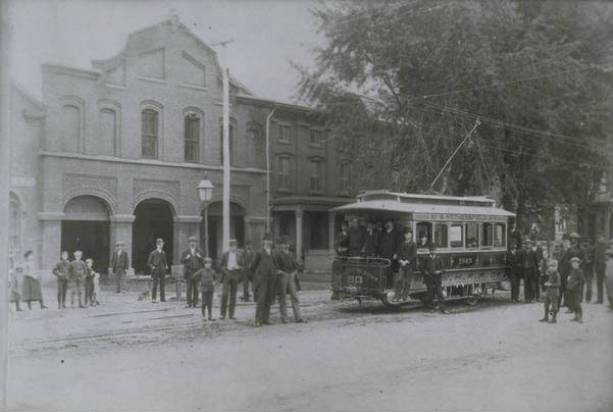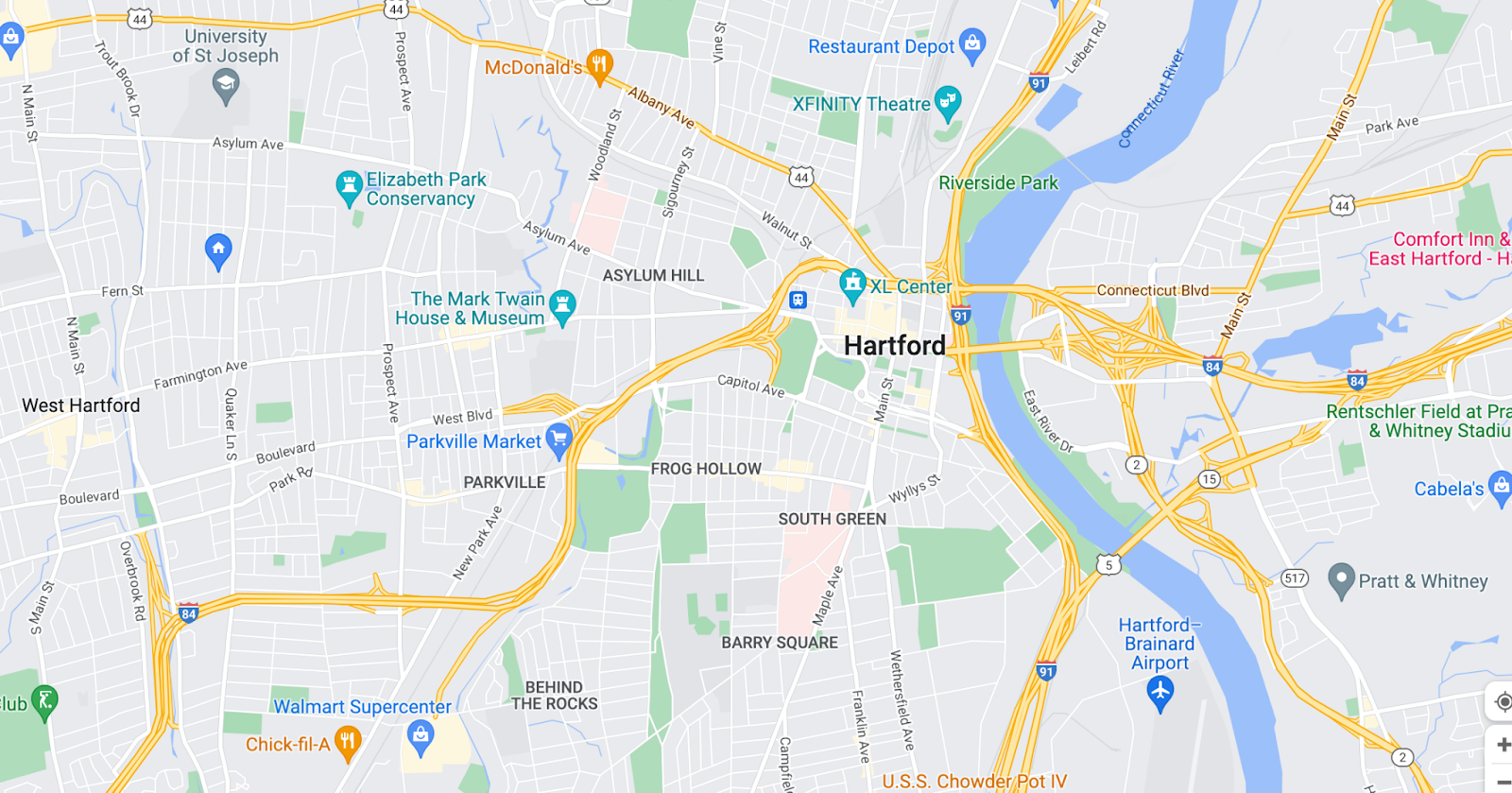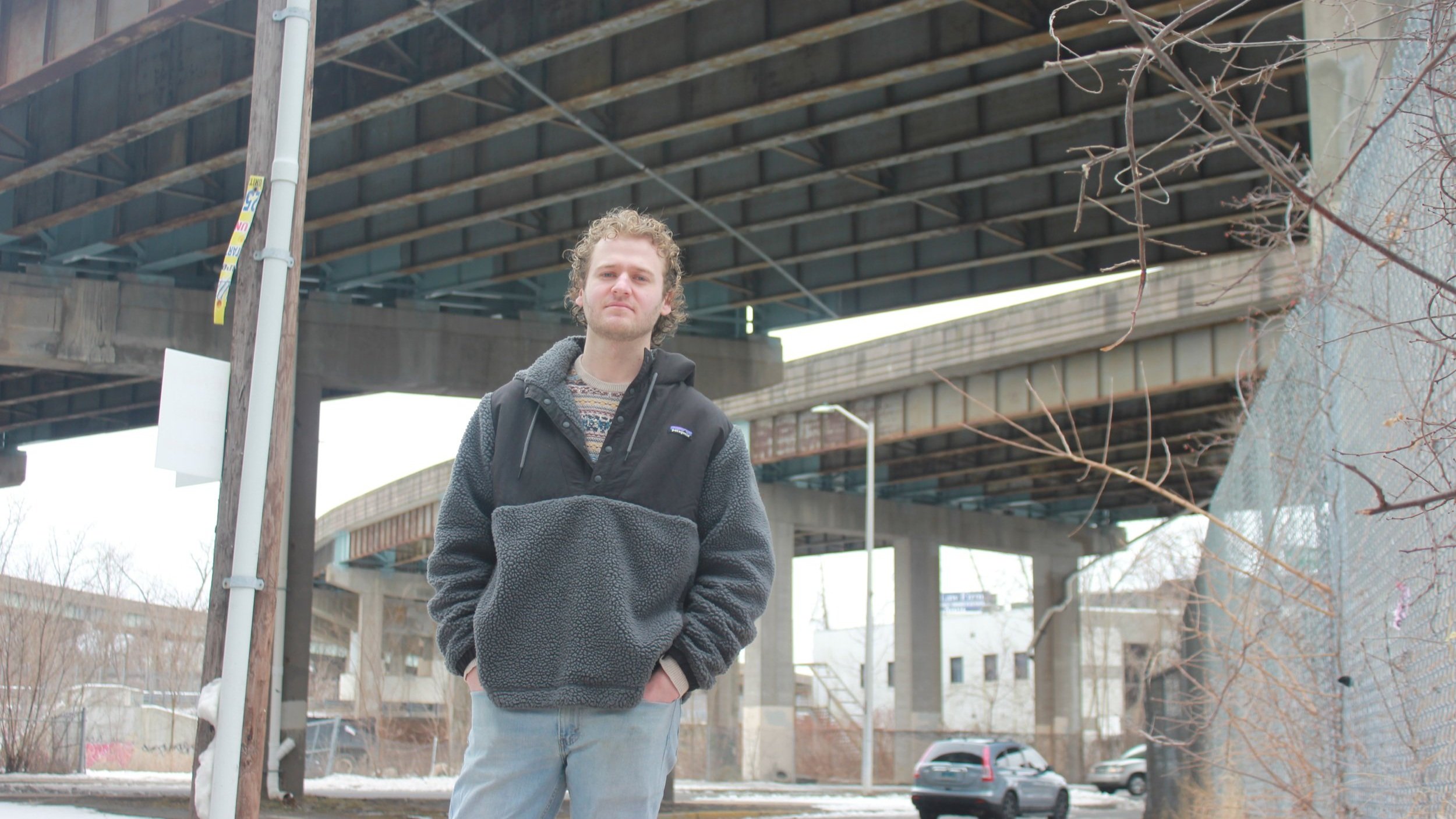The Road That Killed a City
(Source: Connecticut History.)
Can building an urban highway be such a bad idea that it would kill one of the most prosperous cities in America? Not just a neighborhood or two, but an entire city?
Seems hard to believe. But when I moved to the Hartford, Connecticut, metro area with my family almost two years ago, I started to see some pretty compelling evidence.
We had come to Connecticut from Alaska to be near my wife’s East Coast family. Hartford was eminently affordable compared to Boston and New York City, where my kids were born. My wife got a job at one of the big insurance companies headquartered here and we settled in.
We found a home in a streetcar suburb in West Hartford, the first main ring of single-family home suburbia outside the City of Hartford. Just two blocks away is Farmington Avenue, where one of the first electric streetcar systems in America started operating about 150 years ago.
(Source: Connecticut History.)
Even 100 years after the streetcar was abandoned, Farmington Avenue—where the tracks used to run—still shows off its big Victorian homes and brick apartment buildings with ornate rooflines and quaint courtyards. You can see the golden dome of the state capital building with the right angle of view from a long way away.
One day when I was ready to explore, I tried to ride my bike to the Capitol. I pedaled back in time, to the east on Farmington Avenue to retrace the famous old streetcar line. But instead of getting closer to the center of things, as I expected, I felt lost, even in a short three-mile ride. I ultimately found a spot where I could jump onto a fast-moving stroad underneath the interstate with 45 mph traffic whizzing and dodging around me. Or, I could turn around and go home. I chose the road more traveled and almost needed the personal injury lawyer advertised on the overpass.
(Source: Google Maps.)
Later, as I began to move around the Hartford area by car in the widening gyre of my discovery process, I was fundamentally confused about how to get around. People would bolt onto the I-84, jolt across four or more lanes of thick traffic and bail onto strange left-hand exit ramps barely ⅜ of a mile later. It’s nerve racking, at best, and mostly it’s terrifying.
There is really only one bridge over the big, wide, slow-moving Connecticut River. I can imagine how 150 years ago, it might have reminded one of Hartford’s most famous citizens, Mark Twain, of the Mississippi of his youth. But now, it’s barely visible when driving over it on the interstate, even if you are crazy enough to look away from the road.
(Source: Google Maps.)
The river was cut off from downtown Hartford by the I-91 North-South interstate highway built in the post-WWII Suburban Experiment. A busy and productive working class neighborhood full of Jewish, Italian, and Black families called the North End got the same treatment from the East-West I-84. These changes were very sudden, taking only 5–10 years, but combined with the rise of auto-centric outer ring suburbs and a push for White families to leave urban Hartford, they were final. A death knell.
In New York City, Jane Jacobs famously organized resistance to similar urban renewal projects, including her most famous stand to keep Robert Moses from bulldozing an urban interstate highway through Greenwich Village. But there was no Jane Jacobs in Hartford. Sixty years later, the city struggles. From its one-time status as one of America’s most prosperous cities, it is now one of the poorest.
A young man named Jim Krueger, who grew up in West Hartford, always wondered why there was such a convoluted knot of multi-deck roadways, offramps, bridges, and clover leaves serving the relatively small City of Hartford and its population of 125,000. Even with around a million people living in the Greater Hartford area, the scale of the interstates made no sense to Krueger.
Jim Krueger. (Source: Jim Krueger.)
The deeper he dug, the more questions were revealed. He found Tony Cherolis, an activist for transit and non-motorized transportation, then a Trinity College professor named Jack Dougherty, and soon after many other community leaders and scholars who wondered the same things.
Krueger has traced the decline of Hartford, one flawed decision after another, in a project he started working on as a journalism major in 2019. The Road That Killed A City is the result, a six-episode podcast which the Hartford Courant newspaper calls “unflinching.”
Perhaps another three-year research project could uncover the cost of maintaining and rebuilding this massively overbuilt interstate knot which chokes Hartford. Short-term projects in the range of hundreds of millions of dollars are underway to keep the whole thing standing. Long-term fixes in the realm of tens of billions of dollars are being contemplated in a project called the Greater Hartford Mobility Study.
Farmington Avenue comparisons from The Road That Killed A City. (Source: The Road That Killed A City.)
Krueger told the Hartford Courant newspaper he did research in the Hartford Public Library (which has also written about his podcast). There, he found an editorial by The Courant from the 1950s or 1960s saying the highway plan would revolutionize Hartford, which would become the hub of the area.
People wanted a simple, gleaming futuristic project, but it ultimately was “co-opted by sinister things like segregation,” Krueger told The Courant. “One thing was clear, people really wanted a highway. There was pressure from the government to add a highway. But it led to red-lining and people moving to the suburbs. The Hartford population had been rising, until the highway arrived and it became easier to move out.”
Even though no heroine like Jane Jacobs emerged to steer the highway projects away, there were voices of caution. Krueger’s podcast considers the clash between large, top-down urban renewal projects and the more traditional, incremental development for which Strong Towns advocates.
The conflict is still present and unresolved in most of North America to this day, as we see with decisions being made about $1.2 trillion worth of transportation spending approved by Congress and the President in November. Will that be enough to make generational mistakes or perhaps to begin repairing the mistakes of generations past?







Jay Stange is an experienced community development consultant, journalist, grassroots organizer, musician, teacher, and off-grid project manager. Raised in Alaska, his passions include transforming transportation systems and making it easier to live closer to where we work, play, and do our daily rounds. Find him shopping for groceries on his cargo bike, gardening, and coaching soccer in West Hartford, Connecticut, where he lives with his family. You can connect with him on Twitter at @corvidity.